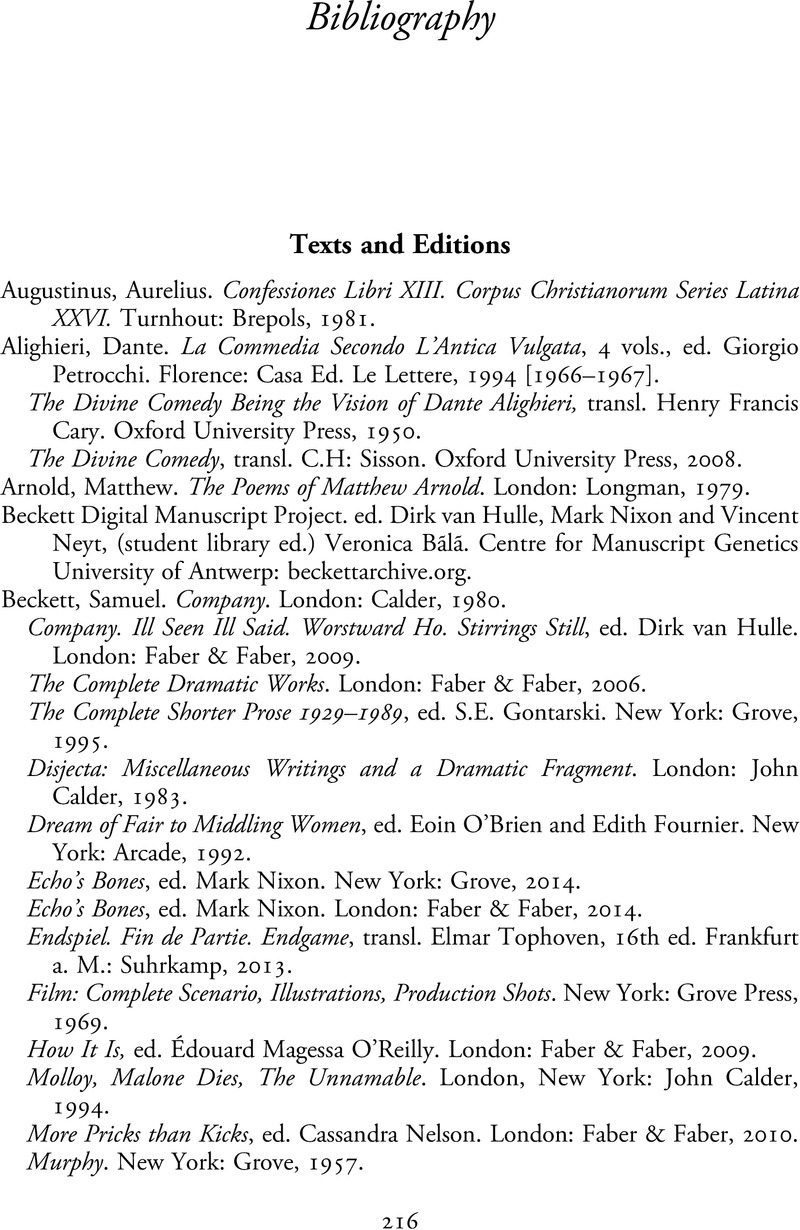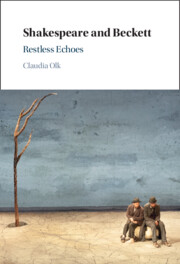Book contents
- Shakespeare and Beckett
- Shakespeare and Beckett
- Copyright page
- Contents
- Acknowledgements
- Abbreviations
- Introduction
- Chapter 1 Shakespeare and Beckett on the Edges
- Chapter 2 Molecular Shakespeare – Beckett Reading Shakespeare through Joyce
- Chapter 3 ‘Some remains’: Beckettian and Shakespearean Echoes
- Chapter 4 Purgatory and Pause – Shakespeare, Dante and the Lobster
- Chapter 5 ‘[It is] winter/Without journey’ – Still Lifes in Beckett and Shakespeare
- Chapter 6 Endgames
- Chapter 7 Theatres of Sleep
- Conclusion
- Bibliography
- Index
- References
Bibliography
Published online by Cambridge University Press: 19 January 2023
- Shakespeare and Beckett
- Shakespeare and Beckett
- Copyright page
- Contents
- Acknowledgements
- Abbreviations
- Introduction
- Chapter 1 Shakespeare and Beckett on the Edges
- Chapter 2 Molecular Shakespeare – Beckett Reading Shakespeare through Joyce
- Chapter 3 ‘Some remains’: Beckettian and Shakespearean Echoes
- Chapter 4 Purgatory and Pause – Shakespeare, Dante and the Lobster
- Chapter 5 ‘[It is] winter/Without journey’ – Still Lifes in Beckett and Shakespeare
- Chapter 6 Endgames
- Chapter 7 Theatres of Sleep
- Conclusion
- Bibliography
- Index
- References
Summary

- Type
- Chapter
- Information
- Shakespeare and Beckett , pp. 216 - 235Publisher: Cambridge University PressPrint publication year: 2023

